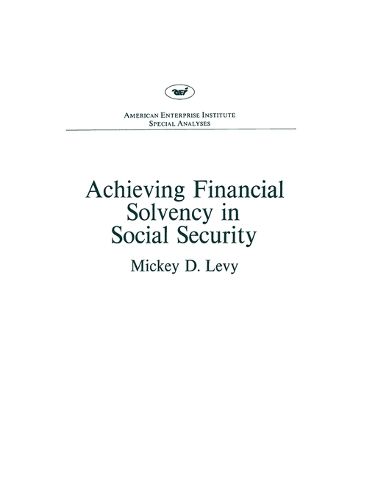Readings Newsletter
Become a Readings Member to make your shopping experience even easier.
Sign in or sign up for free!
You’re not far away from qualifying for FREE standard shipping within Australia
You’ve qualified for FREE standard shipping within Australia
The cart is loading…






The Social Security Amendments of 1972 capped nearly four decades of continuous expansion and benefit increases by boosting benefits a generous 20 percent and indexing benefits to inflation beginning in 1975. At the time, the social security trust fund balances were considered sufficient to absorb any temporary deficit caused by adverse conditions, while projections based on robust fertility rates and a stable and growing economy showed large long-run actuarial surpluses. Since 1973, social security financing has not been viewed through such rose-colored glasses. Annual reports of the trustees of the social security system began projecting long-run deficits based on lower long-run fertility rates and higher rates of inflation and unemployment than were assumed previously. An indexing flaw in the 1972 amendments was detected in 1974 which, until modified by the 1977 amendments, added substantially to projected long-run deficits of the program. Also in the mid-1970s, high rates of unemployment and inflation, coupled with declining growth rates of real wages, precipitated a rapid decline in trust fund balances. In 1977, Congress responded to the short-run financial crisis by increasing payroll taxes, but it largely ignored the long-run financing issue.
$9.00 standard shipping within Australia
FREE standard shipping within Australia for orders over $100.00
Express & International shipping calculated at checkout
The Social Security Amendments of 1972 capped nearly four decades of continuous expansion and benefit increases by boosting benefits a generous 20 percent and indexing benefits to inflation beginning in 1975. At the time, the social security trust fund balances were considered sufficient to absorb any temporary deficit caused by adverse conditions, while projections based on robust fertility rates and a stable and growing economy showed large long-run actuarial surpluses. Since 1973, social security financing has not been viewed through such rose-colored glasses. Annual reports of the trustees of the social security system began projecting long-run deficits based on lower long-run fertility rates and higher rates of inflation and unemployment than were assumed previously. An indexing flaw in the 1972 amendments was detected in 1974 which, until modified by the 1977 amendments, added substantially to projected long-run deficits of the program. Also in the mid-1970s, high rates of unemployment and inflation, coupled with declining growth rates of real wages, precipitated a rapid decline in trust fund balances. In 1977, Congress responded to the short-run financial crisis by increasing payroll taxes, but it largely ignored the long-run financing issue.